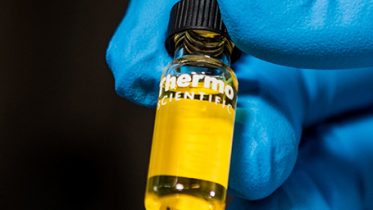What the USMCA means for the Mexican Intellectual Property Framework
- 01 July 2020
- New legislation
After more than 25 years, the days of the North American Free Trade Agreement (NAFTA) are gone. From July 1st, 2020, the United States-Mexico-Canada Agreement (USMCA)1 will govern the trade in North America, setting higher intellectual property standards in the region. Its current Intellectual Property (IP) Chapter, product of a December 10, 2019 amendment to the originally agreed text (hereinafter, the “December amendment”), contains relevant obligations across the whole spectrum of subject-matter, including trademarks, geographical indications, copyright, and trade secrets.
How does the new trade agreement change the IP landscape for Mexico? Please keep reading to find out.
International agreements
The USMCA requires the parties to ratify or accede to the following IP-related trade agreements: the Madrid Protocol2, the Budapest Treaty3, UPOV 19914, the Hague Agreement5, and the Brussels Convention6.
Apart from UPOV 1991, all the agreements are part of Mexico’s IP system already. Mexico’s most recent signatures concerned the international registration of marks and industrial designs, with the Madrid Protocol and the Hague Agreement on 2014 and 2020, respectively.
Notably, a proposal for updating the current Plant Varieties Law according to UPOV 91, that is already a couple years old, is now being urgently revised.
Trademarks and Geographical Indications (GI)
Protection of non-traditional trademarks must be afforded under the USMCA: non-visually perceptible trademarks (e.g., sound or scent marks), and collective and certification marks must be eligible for protection. Opposition systems are also a must under the treaty.
Although GI protection is not mandatory, the USMCA sets forth procedural standards that the protection system (sui generis or not) should meet, as well as grounds of denial, opposition, and cancellation of GIs.
In view of amendments introduced to the Industrial Property Law (IPL) on 2018, Mexico’s trademark and GI laws do not need updating with respect to the above-mentioned obligations. Nevertheless, two relevant changes to the trademark system can be mentioned.
First, recordal of trademark licenses will no longer be required, since the USMCA prohibits said recordal as a requirement to establish the validity of the license or as a condition for use of a trademark by a licensee to be deemed to constitute use by the holder in acquisition, maintenance, or enforcement proceedings. This provides greater flexibilities to trademark holders in Mexico, as they are currently pressured to record every license to maintain their trademarks in good standing.
Second, new remedies are created for trademark holders against a person that registers or holds with a bad faith intent to profit, a domain name that is identical or confusingly similar to the trademark.
Notably, the Senate presented a proposal for a new IP Law on December 2019, with the purpose of implementing many of the obligations of the USMCA. Said proposal incorporates new provisions that are expected to provide greater protection to trademarks in line with the above obligations.
Patentable subject-matter
The original text of the USMCA guaranteed patent protection for new medical uses. The corresponding provision was removed with the December amendment, meaning that the parties are no longer required to accept said inventions.
However, the Mexican Institute of Industrial Property (MIIP) has a long-standing practice of protecting new uses of known pharmaceutical products that is very unlikely to deviate from the practice of its commercial partners, which do directly or indirectly protect them.
Furthermore, plants are patentable under the current Law of Industrial Property (LIP), provided they are not i) plant varieties or ii) based on a recent extensive and controversial interpretation of the law, plants obtained by essentially biological processes.
A related obligation arises from article 20.36 of the USMCA, as its third paragraph states that “each Party confirms that patents are available at least for inventions that are derived from plants”. The exact intention and meaning of this article are uncertain7, but it could be used to support the eligibility of plant-related inventions such as plant parts, seeds, and extracts, when arguing against an opposing stance from the MIIP.
Grace period for prejudicial disclosures.
Currently, the LIP provides a grace period of 12 months to prevent that the applicants’ own disclosures destroy the novelty or inventiveness of the invention.
Based on new obligations from the trade agreement, the grace period will also apply to disclosures by third parties that obtained the information directly or indirectly from the applicant. This safeguards the patent rights in cases where a person other than the inventor/applicant (such as a collaborator, colleague, or business partner) discloses the invention based on information obtained by the inventor/applicant, regardless of whether the disclosure is unintentional or product of a misappropriation of information.
The proposal for new IP Law incorporates broader grace period provisions that are expected to comply with this obligation.
Patent term adjustment
The inextensible 20-year patent term can now be adjusted due to unreasonable delays from the MIIP. The unreasonable delay must at least consist of a granting delay of more than five years from the filing date.
Also, the MIIP is allowed to exclude from the calculation of the delay periods of time that:
i) do not occur during the processing or the examination of the patent application, such as the initial administrative processing and the administrative processing at the time of grant;
ii) are not directly attributable to (e.g. outside the direction or control of) the MIIP; and
iii) are attributable to the patent applicant.
Although the MIIP seldomly takes more than 5 years to grant an application, the possibility of compensating the patent term is always good news for patent holders.
The patent term adjustment benefits all applications filed after November 30, 2020. Interestingly, the proposal for new IP Law already includes patent term adjustment provisions that could apply to applications filed before said date.
Patent term adjustment of pharmaceutical patents
A further mechanism for term adjustment is provided for patents covering a pharmaceutical product, to compensate for unreasonable curtailment as a result of the marketing approval process.
Under the USMCA, conditions and limitations to this type of patent term adjustment may include:
i) limiting the adjustment to a single patent for each pharmaceutical product with a marketing approval,
ii) requiring the adjustment to be based on the first marketing approval granted to the pharmaceutical product in the country,
iii) capping the adjustment to 5 years, as well as any additional adjustment to 2 years.
Unlike the patent term adjustment due to MIIP delays, the trade agreement does not establish whether certain periods of time may be excluded from the calculation of compensatory term.
Worth highlighting is the transition period of 4.5 years set forth in the USMCA for these provisions, during which the corresponding legislative measures to fully implement the obligations are expected to occur. The proposal for new IP Law does not provide for term adjustments of pharmaceutical patents, so no changes are expected in the near future.
Test data protection
This was one of the most controversial provisions in the original text of the agreement, as it forced the Parties to provide a 10-year period of test data protection (or market exclusivity) for biologics. The December amendment removed said obligation but maintained the minimum data protection terms of 10 years for new agrochemical products, and 5 years for new pharmaceutical products, including 5 years for combinations comprising a new chemical entity. The period of protection is counted from the date of marketing approval, and applies for undisclosed test data concerning safety and efficacy of the product, submitted locally and abroad.
The above means that new agrochemicals approved in Mexico will have their market exclusivity period doubled, whereas the exclusivity period of pharmaceuticals stays unchanged.
One may wonder if the USMCA’s test data protection applies for biologics, given that the 10-year exclusivity was dropped. The answer lies in the definition of “new pharmaceutical product”: one that does not contain a chemical entity that has been previously approved (article 20.49). In as far as biologics are chemical entities of biologic origin, but chemical entities nevertheless, they are eligible for the 5-year protection.
Notably, the Mexican Health authority has refused to grant exclusivity to biologics, interpreting NAFTA’s analogue obligation of protecting products that utilize new “chemical entities”, as being restricted to products that utilize “new entities of chemical origin”. The courts have reached to a different conclusion, instructing the Health authority to protect biologics when applicants appeal. Unfortunately, because the USMCA uses the same language as the NAFTA, it does not settle the controversy so litigation will likely be needed in the future as well.
Test data protection provisions are subject to a 5-year transition period. For now, no new laws have been proposed in this respect.
Linkage system
Mexican law provides a linkage system to prevent the regulatory approval of products covered by a patent, without the patent holder’s consent. The system is, however, too rigid, and full of legal uncertainties for all parties involved, especially when compared to its Canadian or US counterparts.
The USMCA’s linkage provisions were initially drafted to obviate the need to amend the currently existing systems. Mexico is then free to mimic the Canadian or US linkage systems or, as will certainly happen, maintain the current one. Nevertheless, with the December amendment, one major addition is worth highlighting in case Mexico decides to keep the current system:
The patent holder must now be notified whenever a marketing application is filed by an unauthorized third party and provided a reasonable opportunity to present facts and arguments regarding said marketing application. In the past, it was difficult for patent holders to identify potential infringers seeking regulatory approval, so, with this new obligation innovator pharmaceutical companies will have increased opportunities to identify and hinder potential generic competitors.
Industrial Designs
The minimum term of protection of 15 years demanded by the USMCA is already provided in Mexico, so no changes are needed for industrial designs.
Copyright
Currently, the Copyright Law protects works, performances, or phonograms for 100 years after the author’s death. This exceeds the minimum term of 70 years of the USMCA, so no amendments would be needed in this respect.
Nevertheless, the copyright system is reinforced as legal remedies against circumvention of Technological Protection Measures (TPM) must be provided, while safeguarding a range of good-faith activities with an extensive list of limitations and exceptions. Rights Management Information (RMI) is also strengthened, since legal remedies, including criminal penalties, must be available in case RMI is removed or altered.
Furthermore, under the trade agreement, acts related to the decoding of encrypted program-carrying satellite or cable signals, shall be deemed criminal offences. The acts include wilfully receiving and further distributing unlawfully decoded signals.
Lastly, worth noting is the creation of criminal penalties against audio-visual recording in movie theaters, as this is currently not penalized.
The Copyright Law and Federal Criminal Code need several adjustments because, currently, they insufficiently regulate TPM and do not protect RMI nor they penalize the wilful distribution of decoded signals. In this respect, proposals of amendments to the respective laws have been presented this year to regulate TPMs and RMI, and to establish corresponding criminal sanctions.
Trade secrets
The provisions in the USMCA regarding trade secrets are extensive. They include: detailed definitions of what is a trade secret and what constitutes a misappropriation thereof; availability of civil procedures for preventing and obtaining redress for the misappropriation of a trade secret, such as those related to provisional measures and injunctive relief; protection of confidentiality of trade secrets during civil judicial proceedings; and prohibition of unauthorized disclosure or use of a trade secret by government officials outside their official duties.
Mexico’s trade secrets provisions are not as exhaustive and are scattered across different laws, so the USMCA represents a true improvement for the Mexican trade secrets system while also being an excellent opportunity to systematize the legal framework that should not be missed by lawmakers.
A transition period of 5 years applies in this case.
Enforcement
The enforcement section of the IP chapter is robust, as it regulates basic procedural standards in infringement proceedings; civil and administrative remedies, including injunctive relief and inaudita altera pars provisional measures; and it obligates the parties to publish IP-related resolutions and judicial decisions. Even though Mexico’s enforcement system has a huge potential for improvement, the laws and government bodies needed to comply with the USMCA exist, so, broadly speaking, the treaty does not prompt significant changes.
It can be noted, however, that the proposal for new IP Law empowers the MIIP for quantifying damages in infringement proceedings, which could effectively reduce the time and efforts needed for obtaining redress. Currently, the procedures are so long that they dissuade from seeking payment of damages and lost profits in most cases.
As to what does represent a change due to the USMCA, an interesting obligation -currently unknown under the IPL- is the compensation due to abuse of enforcement procedures and payment of defendant’s expenses in such cases.
Furthermore, combating the importation of counterfeits and pirated goods has proven to be troublesome in the past. Now, with the USMCA, several mechanisms to prevent the importation of counterfeit trademark or pirated copyright goods -which are currently limited- must be established: i) applications to detain suspected counterfeit/pirated goods to be imported into the country, ii) authorities’ power to inform the right holder of suspected goods without undue delay, and iii) authorities’ power to initiate border measures ex officio on customs control.
Safe harbors for Internet Service Providers
The trade agreement obligates the parties to provide legal incentives for the cooperation of Internet Service Providers (ISP) to deter the unauthorized storage and transmission of copyrighted materials. ISPs will also benefit from safe harbors, shielding them from liability if they implement policies and measures regarding copyrighted material. Overall, this confers predictability and certainty to both copyright holders and ISPs.
Safe harbor provisions are completely novel for the Mexican IP framework, so a substantive revision to the Federal Law on Author’s Rights is in order. Hopefully, the 3-year transition period for implementing safe harbor obligations will allow for adequate review and implementation.
Closing remarks
The USMCA undoubtedly heightens the standards of protection of Mexico’s IP system, which offers increased opportunities and certainty for both local and foreign innovator companies.
As noted above, the Mexican government has begun preparing for the new regime, but the new/amended laws are expected to be in force by the end of 2020. The obligations subject to transition periods will wait for longer.
The USMCA’s full IP Chapter can be accessed here.
____________________________________________________
(1) This is the name given by the Unites States. It is known as the Canada-United States-Mexico Agreement (CUSMA) in Canada and as the Treaty between Mexico, United States and Canada (T-MEC) in Mexico.
(2) Protocol Relating to the Madrid Agreement Concerning the International Registration of Marks.
(3) Budapest Treaty on the International Recognition of the Deposit of Microorganisms for the Purposes of Patent Procedure, as amended on September 26, 1980.
(4) International Convention for the Protection of New Varieties of Plants, as revised on March 19, 1991.
(5) Geneva Act of the Hague Agreement Concerning the International Registration of Industrial Designs
(6) Convention Relating to the Distribution of Programme-Carrying Signals Transmitted by Satellite.
(7) Apart from the explanatory notes in the text of the agreement, there are no additional sources for the interpretation of the provisions of the treaty.









